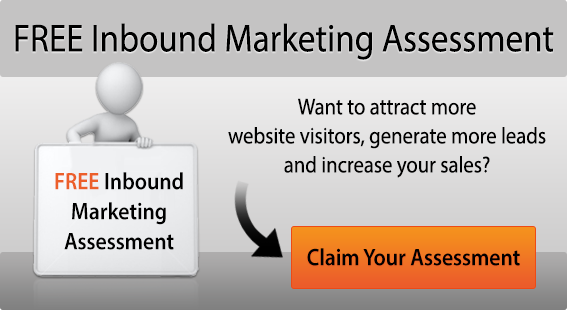4 Reasons Inbound Marketing Is Your Best Sales Tool

Both conventional sales wisdom and lived experience suggest that if you want something from someone you have to ask. “Customers aren’t just going to come to you and offer you money” – they say - which is why all traditional sales strategies involve directly pursuing customers in some way, whether through adverts, direct mail, ‘cold’ telesales, email promotions, and so on. In outbound sales, you make all the moves and do all the asking.
A leap of faith
Inbound marketing turns this idea on its head, which is why the concept is often a leap of faith for people unfamiliar with it. Through inbound marketing, you encourage your target customers to come to you, making the first contact and calling the shots throughout your relationship. Your job is, firstly, to make yourself easily found by the right type of people, and secondly, to provide your prospects with the information they need to make an informed (and hopefully positive) sales decision.
Despite the unconventional approach, inbound marketing is an exceptionally powerful and effective sales tool, with a better success rate than traditional outbound sales, and the potential to create higher value customer relationships with more repeat business and more referrals.
In this article, we look at the main advantages of using inbound marketing to increase your number of sales qualified leads and why you should make it part of your sales strategy.
1) Higher quality leads
The first reason why inbound marketing is good for sales is that it attracts higher quality leads. By targeting your inbound marketing strategy to attract website traffic from 1-4 carefully selected buyer persona profiles, or customer types, you create a flow of web visitors who are intrinsically more likely to convert – by virtue of being more interested in your services. You attract the right people by publishing a range of high-quality blog posts and web pages, optimised for specific keywords or search queries. This serves the dual purpose of increasing your search engine visibility (search engine optimisation/SEO) and encouraging the people who find your site to make lead enquiries.
2) Less guesswork
A big drawback of many outbound sales approaches is that you end up never really knowing where your sales have come from or how much they cost you. You don’t know what you’re doing right or wrong, or where improvements can be made. Simply publishing a blog and hoping for the best falls into the same trap, but inbound marketing involves a conscious effort to collate measurable data, and to monitor your efforts closely to understand customer behaviour and pinpoint the most successful content strategies. It’s this strategic approach that makes inbound marketing so effective.
With more data at your fingertips – covering a broad range of metrics – your marketing strategy becomes more measurable. You can identify the best performing landing pages, emails, and articles, prioritising your time on the best conversion strategies. And with this data comes a deeper understanding of your buyer personas, allowing you to fine tune your targeting strategy to focus on the most qualified leads.
3) Time savings
All sales strategies require an investment of time and money to creating content and follow up leads, but inbound marketing enables a higher level of automation that can save your team valuable time and increase productivity.
How does marketing automation work?
To deploy inbound marketing effectively you will need a Customer Relationship Management (CRM) platform through which you can segment and organise your prospect data, and manage your email marketing campaigns and landing pages. The latest generation of CRM applications, such as HubSpot, come with a range of tools that automate manual data entry and customer facing tasks, such as logging new communications on your database and replying to website enquiries. Automation tools can be used to set up and manage some very complex email marketing workflows to ‘drip feed’ content to prospects in response to behavioural cues. The amount of time you save on such routine tasks quickly adds up, and it also helps avoid data entry errors – and ensures that all website leads are followed up promptly before they go cold.
4) Better lead nurturing
With outbound sales, you make contact with a prospect, give them your best sales pitch, ask for the sale, go through a few objection-responses, and either get the deal or send them on their way. If they are not ready to buy today, that’s it. There isn’t much opportunity for a two-way dialogue over time, or for a strategic approach to lead nurturing.
At the heart of inbound marketing, on the other hand, is the recognition that not all prospects are at the same stage of their decision-making process. In fact, most people that make contact with you through your website won’t be ready to buy immediately. Inbound marketing – making use of an email list and targeted content – gives you the opportunity to engage with your prospects where they are, to answer their questions and concerns, and to nurture them to the stage where they are comfortable making a purchase.
What’s more, through your automation platform you can log all your touch points and communications to tailor your strategy to better address the needs and queries of your buyer personas. You’ll quickly find out what type of email messages your target buyers respond to most, and which ones fall flat, and the types of content that are most popular.
Find out more
At JDR, we provide tailored inbound marketing support for businesses in all sectors, helping our customers identify their most lucrative markets, increase their online visibility, and manage every aspect of content creation and lead nurturing. To find out more about how inbound marketing can increase your sales, please call 01332 343281 today.
Image Source: Unsplash



